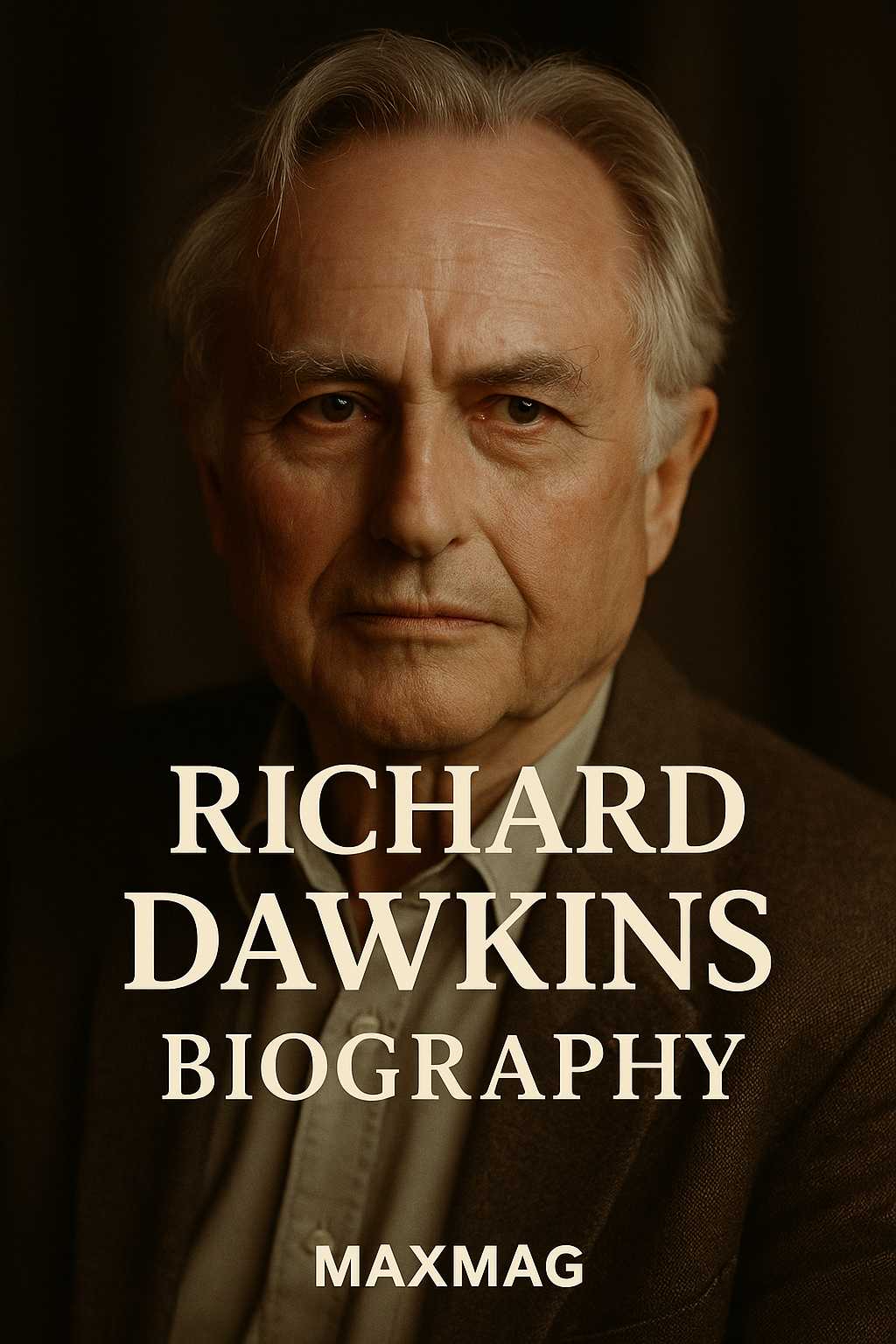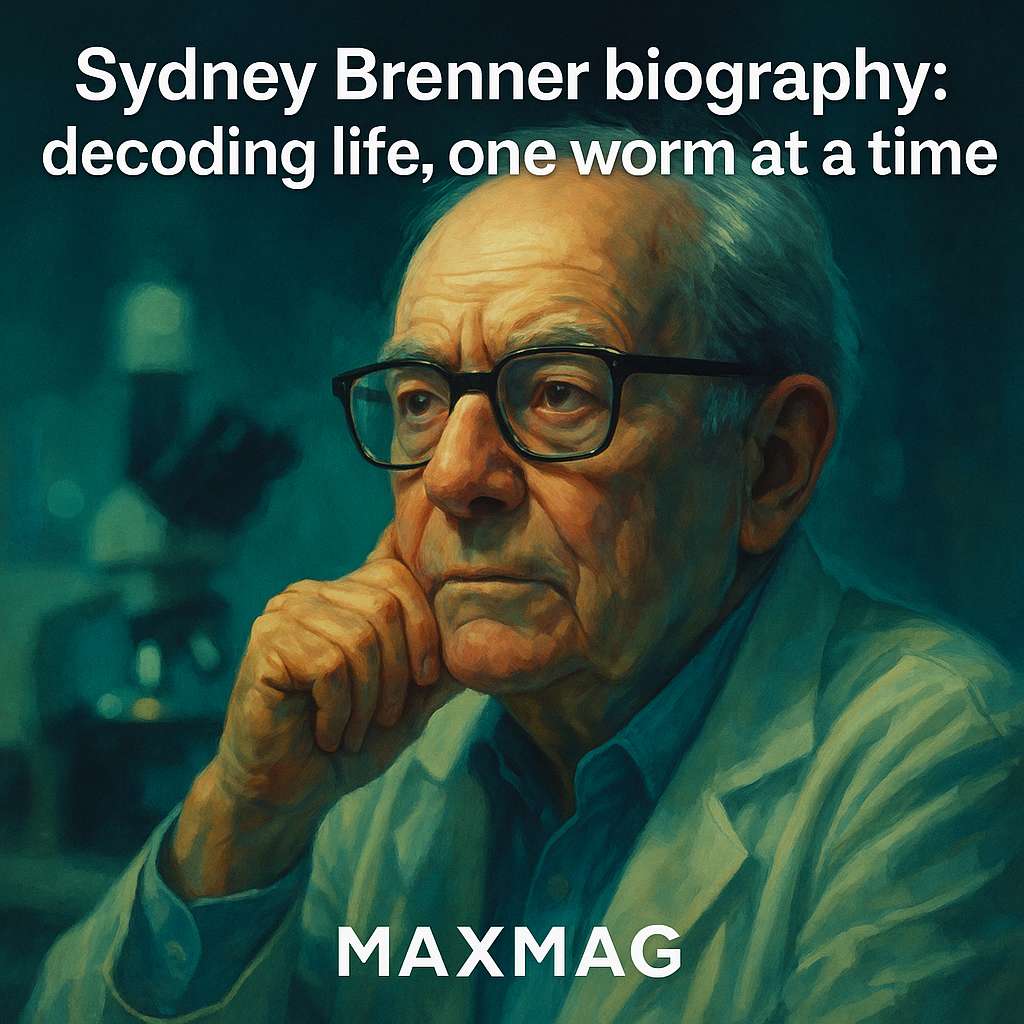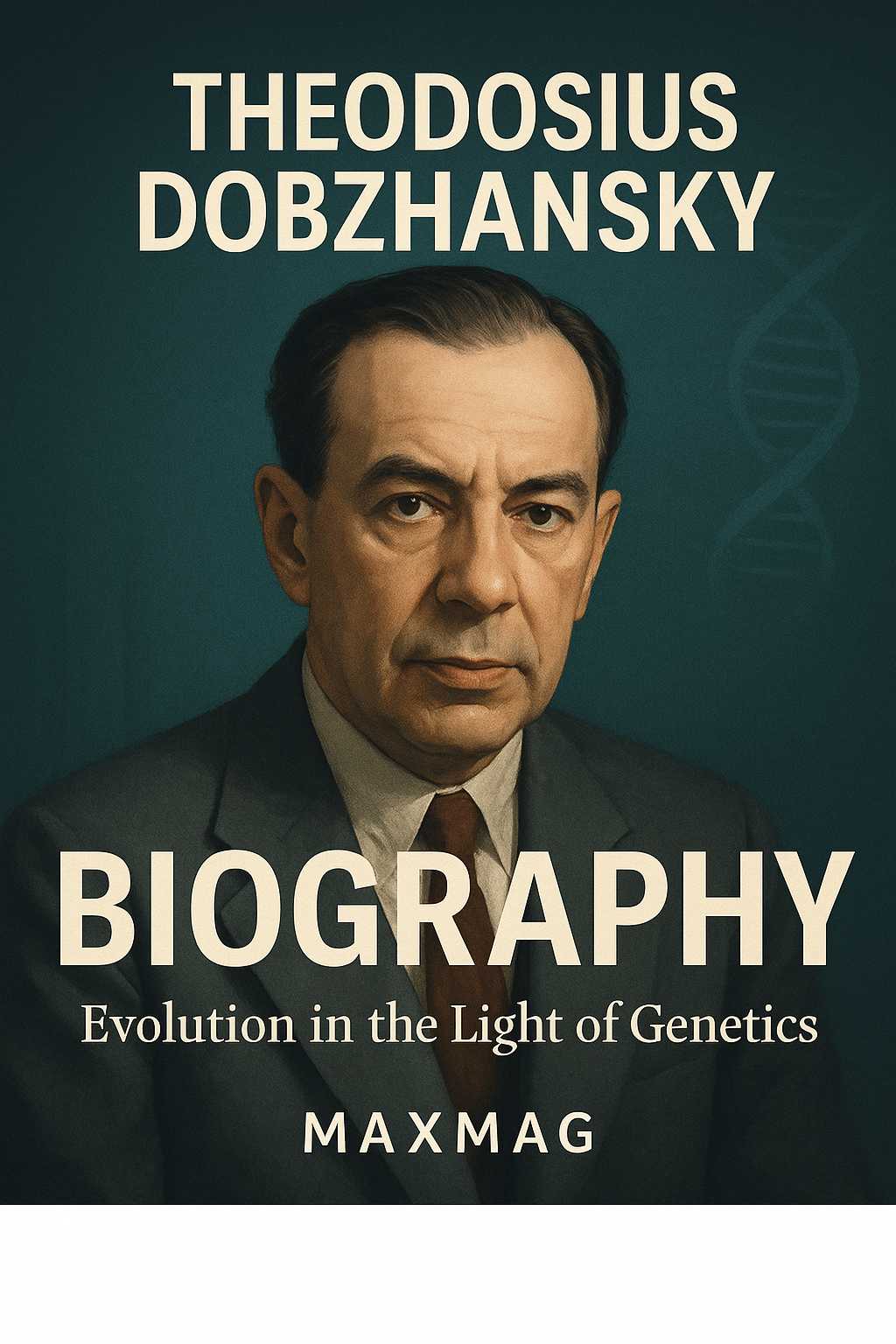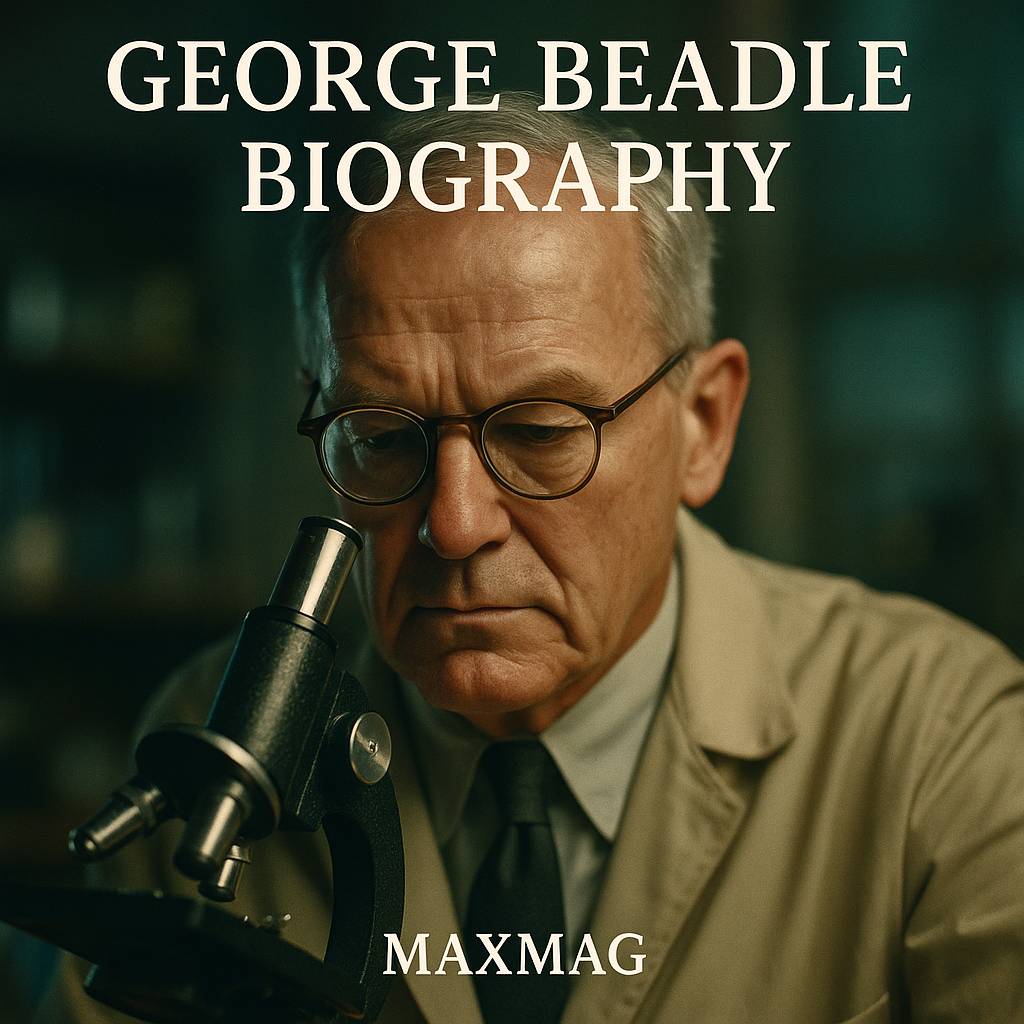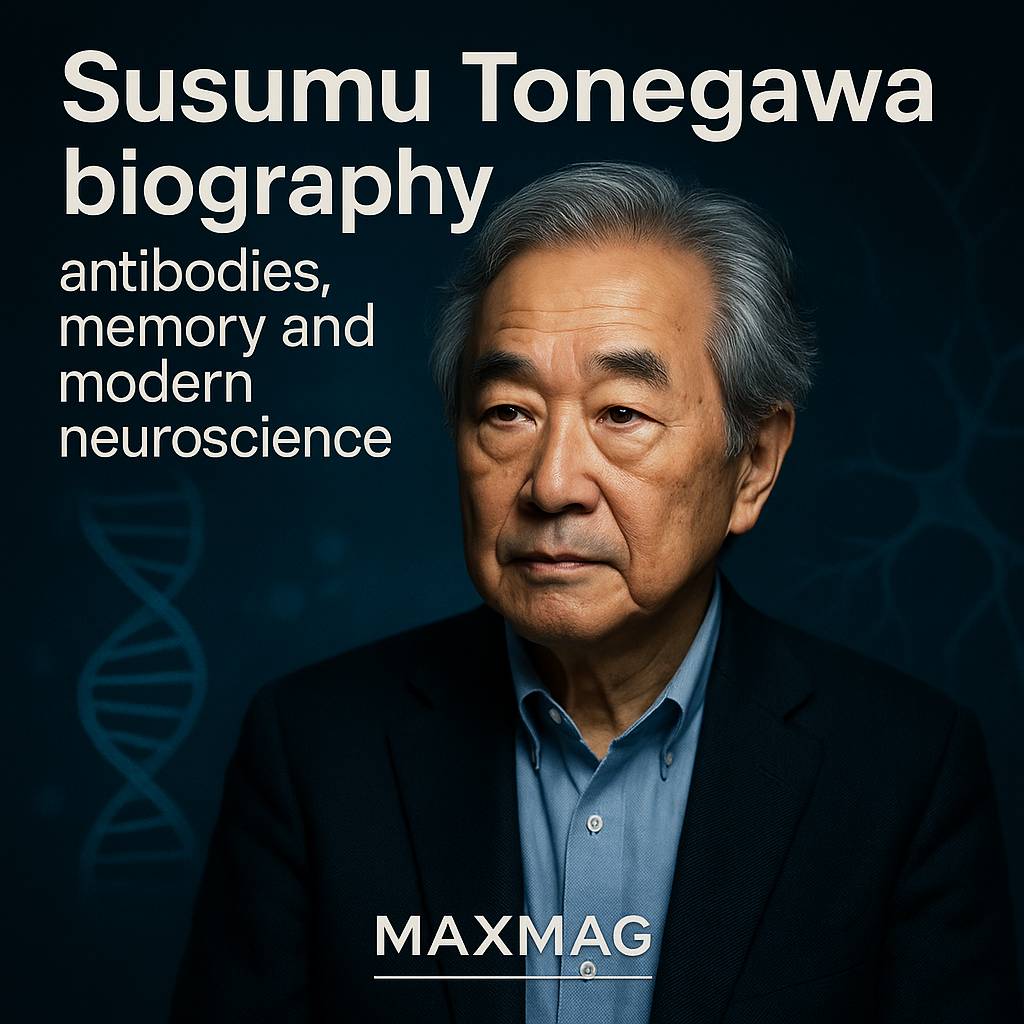
On a winter day in Stockholm in 1958, a reserved American geneticist stepped onto the Nobel stage, sharing the spotlight with his long-time collaborator George Beadle and the young prodigy Joshua Lederberg. It was a public climax to a life spent mostly in cramped laboratories and quiet campus offices, yet almost every Edward Tatum biography begins there: with the moment the scientific world finally acknowledged that genes and chemistry were not separate realms but part of a single, intertwined story.
Read closely, however, any thoughtful Edward Tatum biography reveals a more interesting tension. Tatum helped turn abstract “factors” in heredity into something concrete and measurable, but he did it by working with one of the humblest of organisms: a red bread mold that thrived on stale loaves in an incubator. From those orange colonies he and Beadle extracted a radical idea – the one gene one enzyme hypothesis – that would lay the foundations of biochemical genetics and help usher in molecular biology.
Edward Tatum biography at a glance
- Who: Edward Lawrie Tatum (1909–1975), American geneticist and biochemical genetics pioneer.
- Field & era: Mid-20th century genetics, microbiology and biochemistry during the birth of molecular biology.
- Headline contribution: Co-creator of the one gene one enzyme hypothesis through experiments on the bread mold Neurospora crassa, and co-discoverer of bacterial recombination.
- Why he matters today: His work turned genes into analysable chemical agents, reshaping how scientists understand genetic diseases, metabolic pathways and, ultimately, modern gene editing.
Early life and education of Edward Tatum
A childhood in the shadow of a laboratory
Edward Lawrie Tatum was born in Boulder, Colorado, in December 1909, the eldest son of Arthur Tatum, a chemist who later became a professor of pharmacology at the University of Wisconsin. Home life was steeped in science: conversations over dinner often revolved around experiments, students and the latest papers arriving by post. For a future biochemical genetics pioneer, the household functioned almost like a quiet apprenticeship in how scientists think and talk.
Like many scientists of his generation, Tatum did not follow a straight path. He began his studies at the University of Chicago, then moved to the University of Wisconsin–Madison, where he completed both his bachelor’s degree in 1931 and a PhD in biochemistry in 1934. His doctoral thesis, on the biochemistry of microorganisms, already hinted at a fascination with how tiny organisms could be used as tools to dissect life’s chemistry, a thread that runs through every serious Edward Tatum biography.
Finding a language between chemistry and biology
In the early 1930s, biology and chemistry were still separate academic worlds. Geneticists traced traits in flies or corn; biochemists measured reactions in flasks. Tatum’s training gave him fluency in both languages. He was comfortable with enzymes, vitamins and metabolic pathways, but also curious about how hereditary factors might direct those chemical reactions. That interest in bridging disciplines would later make him receptive to a collaboration that changed his career.
After postdoctoral work that included studying vitamins and bacterial metabolism, Tatum joined Stanford University in 1937. There he encountered George Beadle, a Drosophila geneticist searching for a new organism that might reveal how genes influenced chemistry inside cells. The stage was set for the central chapters of any Edward Tatum biography: the marriage of classical genetics with rigorous biochemistry.
In short, Tatum’s upbringing in a scientist’s home and his dual training in chemistry and biology positioned him perfectly to help fuse genetics with biochemistry at a moment when the field was ready for such a leap.
Edward Tatum biography and the birth of biochemical genetics
Choosing a strange partner: bread mold as model organism
By the late 1930s, Beadle had an ambitious idea: instead of following eye colour in fruit flies, what if one could track how genes controlled single chemical steps in a living cell? For that, he needed an organism with simple nutritional needs and a straightforward genetic system. Tatum suggested the red bread mold Neurospora crassa, already used by mycologists but largely ignored by mainstream geneticists. It grew fast, produced abundant spores and, crucially, could be cultured on a minimal nutrient medium.
The pair made a pact. They would bombard Neurospora spores with X-rays to induce random mutations, then grow the resulting colonies on basic medium. If, after testing 5,000 cultures, they found no mutants with specific nutritional defects, they would abandon the project. For months, the work was repetitive and physically exhausting: plating spores, waiting for growth, transferring invisible flecks to new dishes, and recording failures. The drama of this make-or-break experiment is often the first vivid scene highlighted in a narrative-driven Edward Tatum biography.
From bread mold to blueprint: the experiment every Edward Tatum biography remembers
Success finally arrived when they discovered strains of Neurospora that could no longer grow on minimal medium but recovered when the medium was supplemented with a specific amino acid or vitamin. Each mutant seemed to have lost the ability to carry out one critical chemical step. By systematically cataloguing which supplement rescued which mutant, Beadle and Tatum constructed pathways that linked genes to individual enzymatic reactions – a direct bridge from heredity to metabolism.
Out of this work emerged the famous one gene one enzyme hypothesis: the idea that each gene specifies a single enzyme responsible for one step in a biochemical pathway. Today biologists know that reality is more complex – with genes encoding structural proteins, regulatory factors and multiple protein products – but at the time, this stark formulation was revolutionary. It showed that genes were not abstract units but precise instructions for chemical machinery. That leap is central to the Edward Tatum biography as a turning point in the history of molecular biology.
A hypothesis that changed how scientists saw genes
The path from idea to acceptance was not smooth. Some senior scientists dismissed the one gene one enzyme hypothesis as oversimplified, or doubted that such neat control could exist in messy living cells. But younger researchers quickly grasped the power of the approach. If mutations could knock out single steps in a pathway, then tracking those defects offered a way to map both the biochemistry and the underlying genes.
Beadle and Tatum’s experiments also transformed how research was done. Instead of waiting for rare natural mutants, they used X-rays to create their own and then used logical nutritional tests to interpret the results. In doing so, they helped launch what we now call biochemical genetics, a bridge discipline that would later morph into molecular genetics. Many secondary themes that surface in discussions of mid-20th century science – from Neurospora genetics to the history of molecular biology – trace back to the same set of red-orange colonies in a Stanford lab.
In retrospect, this period in the Edward Tatum biography marks the moment when genes stopped being mysterious “factors” and became specific chemical instructions, accessible to experiment and logic.
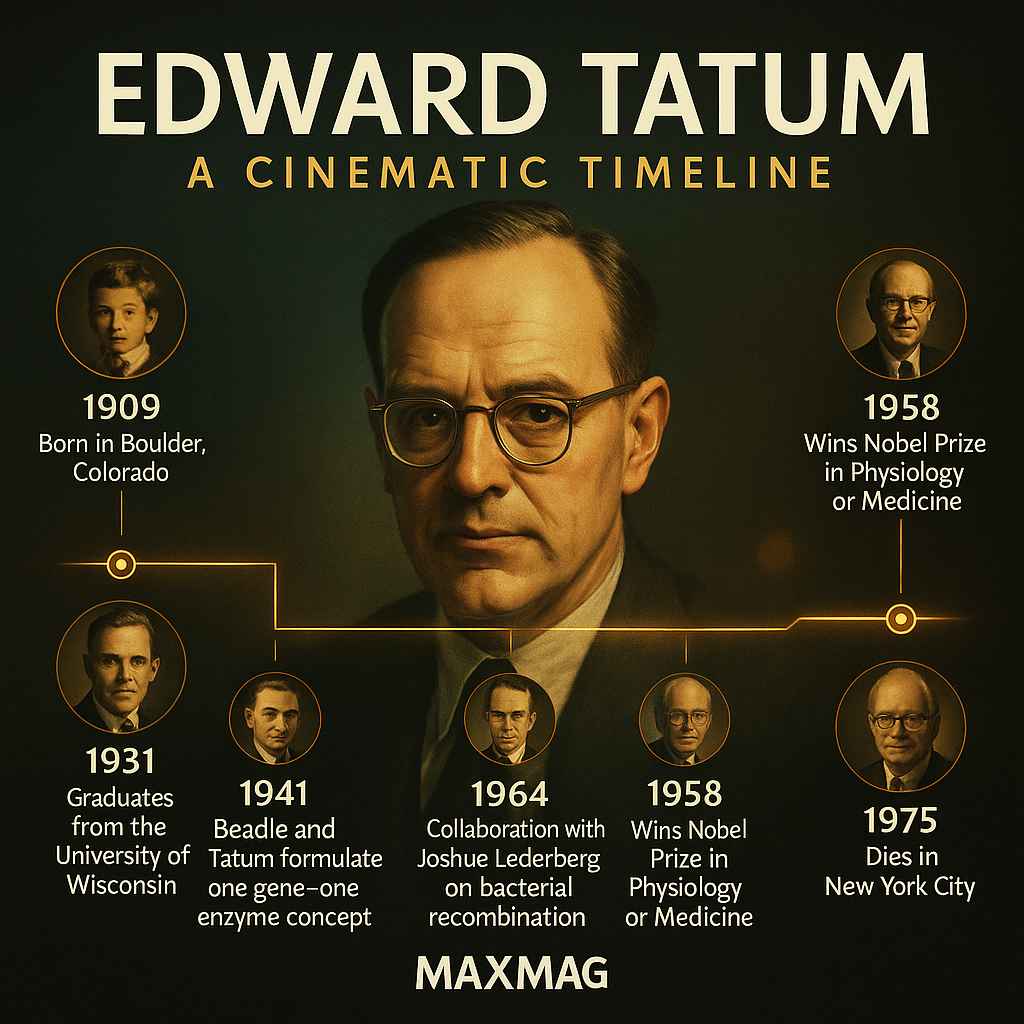
Key works and major contributions of Edward Tatum
Beyond mold: mapping metabolic pathways one mutation at a time
The best-known papers from this era, such as “Genetic Control of Biochemical Reactions in Neurospora,” read today like careful detective stories. A mutation appears, an amino acid disappears, and step by step the pathway is reconstructed. For students encountering the Edward Tatum biography, these studies show how smart experimental design can turn an apparently chaotic system into something understandable, even on the benchtops of the 1940s.
Working with colleagues like Norman Horowitz and Charles Yanofsky, Tatum used genetic mutants to clarify pathways for the synthesis of many amino acids and vitamins. The mutants were not just curiosities; they became practical tools for measuring nutrient content in foods during the Second World War and for training a generation of young researchers in rigorous genetic analysis. This productivity reinforced his reputation as a biochemical genetics pioneer, not just Beadle’s collaborator.
From fungi to bacteria: discovering genetic recombination in microbes
In the mid-1940s, Tatum’s attention turned to bacteria, long viewed as simple, clonally reproducing organisms with little to teach geneticists. Partnering with his student Joshua Lederberg at Yale, he helped overturn that assumption. By mixing different nutritional mutants of Escherichia coli and then plating them on minimal medium, they discovered rare colonies that had regained full metabolic capability. The most logical explanation was genetic recombination: bacteria, it seemed, could exchange hereditary material.
This discovery opened the door to bacterial genetics – and, eventually, to our understanding of how bacteria share genes for antibiotic resistance. In many ways, it was a quieter but equally profound sequel to the one gene one enzyme work. Any complete Edward Tatum biography must balance the dramatic Neurospora experiments with this subtler but hugely influential demonstration that even bacteria had a rich genetic life.
Groundwork for modern genetic engineering
Both the Neurospora studies and the bacterial recombination work laid conceptual foundations for modern genetic engineering. By showing that you could track, manipulate and recombine genes in simple organisms, Tatum and his collaborators turned microbes into tools rather than mere pathogens. Decades later, that logic would underpin recombinant DNA technology and, eventually, CRISPR-based gene editing.
The arc from bread mold mutants to today’s gene editing debates is long, but uninterrupted. The same assumption – that genes are discrete, manipulable units controlling measurable biochemical effects – runs through both. For readers interested in how the Edward Tatum biography connects to current controversies, it is striking to see how modern discussions of human gene editing and CRISPR, such as reporting on next-generation CRISPR and gene editing, still lean on concepts Tatum helped popularise.
Ultimately, Tatum’s key works show a consistent pattern: choose the simplest organism, design the sharpest experiment, and let genetics reveal the hidden chemistry of life.
Methods, collaborations and working style
Quiet in manner, exacting in the laboratory
Almost every colleague who wrote about Edward Tatum after his death describes him as quiet, even shy, but unbendingly rigorous when it came to data. He preferred long, careful conversations at the bench to grand speeches in lecture halls. Students recall that a raised eyebrow from Tatum, directed at a sloppy control or a missing replicate, could sting more than a shouted rebuke.
His working style emphasised redundancy and clarity. Plates were labelled in neat, small handwriting; strains were catalogued with meticulous care. In the era before digital databases, such discipline was essential for keeping track of hundreds of mutant strains and their nutritional quirks. For those reading an Edward Tatum biography with an eye on methodology, these details show how much of his impact came from habits of mind as much as from flashes of insight.
Partnerships that defined an era
If Beadle provided the sweeping vision, Tatum anchored it in experimental reality. Their partnership at Stanford is one of the classic collaborations in 20th-century science, pairing a geneticist’s intuition for traits with a biochemist’s sensitivity to pathways and enzymes. Later, his mentoring of Joshua Lederberg and other students extended this collaborative tradition, spawning whole subfields in bacterial genetics and microbiology history.
Tatum was also known for giving credit generously. He insisted that students and junior colleagues appear as co-authors and encouraged them to pursue independent lines of work. That openness helped ensure that the story told in any Edward Tatum biography is not just about one man, but about a network of people and ideas moving together.
How students extended the Edward Tatum biography into new fields
Many of Tatum’s students went on to become major figures in genetics and molecular biology. Lederberg’s later work on plasmids, transduction and bacterial sex built directly on experiments first sketched out in Tatum’s laboratory. Others applied biochemical genetics to yeast, plants and even human cells. In this sense, the Edward Tatum biography is inseparable from a broader story: how a cohort of mid-20th century scientists transformed biology from a largely descriptive discipline into a mechanistic science.
Taken together, Tatum’s working style and collaborations demonstrate that his influence was multiplied through teaching and shared methods, rather than jealously guarded discoveries.
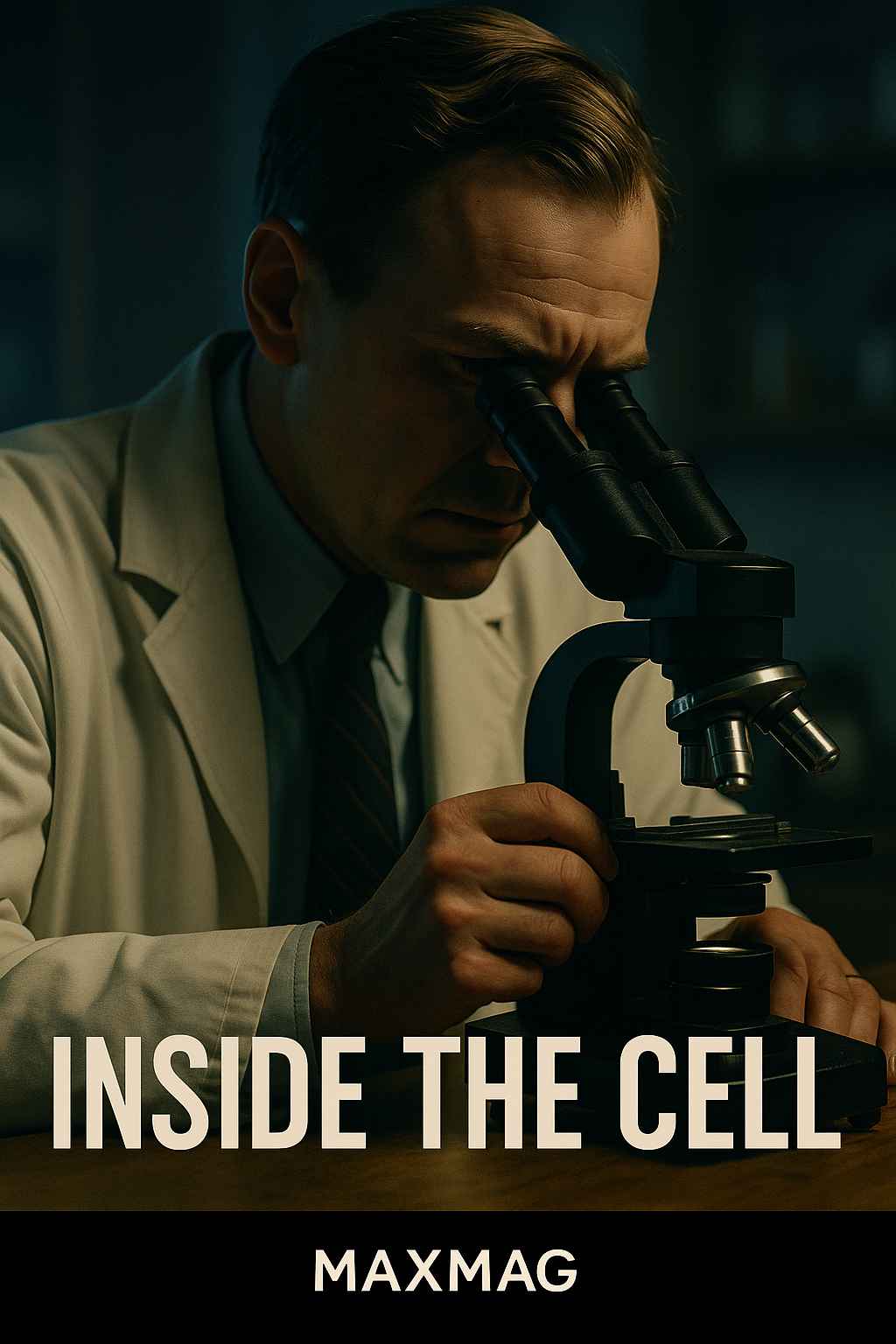
Controversies, criticism and misconceptions
The limits of “one gene one enzyme”
With hindsight, critics are right to say that the one gene one enzyme hypothesis is too simple. Many enzymes are multi-subunit complexes encoded by several genes, some genes produce non-enzymatic proteins or regulatory RNAs, and a single gene can yield multiple products through RNA splicing. But in the context of the 1940s, the boldness of the hypothesis lay not in its precision but in its insistence on a direct link between genes and specific biochemical events.
Tatum himself seemed comfortable with later refinements, such as the “one gene one polypeptide” formulation. He did not cling dogmatically to the original phrase. Modern textbooks may treat the slogan as a historical stepping stone, yet in a balanced Edward Tatum biography it remains crucial as a conceptual turning point: the moment when genes became operational tools for biochemists, not just mysterious units for breeders.
Questions of priority and forgotten contributors
Historians have noted that the idea of linking genes to enzymes did not come from Tatum and Beadle alone. Earlier researchers, including Archibald Garrod and other European geneticists, had hinted at similar relationships between inherited defects and metabolic blocks. Later, debates arose around the work of Franz Moewus and others, who some claimed had anticipated aspects of biochemical genetics but whose data could not be reliably reproduced.
These debates remind us that scientific revolutions rarely hinge on a single paper or laboratory. A nuanced Edward Tatum biography acknowledges that the Nobel committee recognised a particular body of work – clear, reproducible experiments in Neurospora – rather than awarding priority for an idea in the abstract. The award formalised a shift that had been building across many laboratories, but Tatum’s careful execution gave that shift an undeniable centre of gravity.
Myths about personality and ambition
Because Tatum was less flamboyant than some contemporaries, later portrayals sometimes cast him as a purely technical figure in Beadle’s shadow. Yet colleagues’ memoirs emphasise that he was deeply engaged in framing research questions and in defending the importance of biochemical genetics as a new way of doing biology. Ambition, in his case, expressed itself not in self-promotion but in the scale and rigour of the experiments he was willing to undertake.
In short, the main controversies around Tatum’s work reflect the growing pains of a new field, not misconduct or scandal. They highlight the gap between a powerful simplifying hypothesis and the richer, more complex reality we now know.
Impact on genetics and on wider society
From biochemical genetics to molecular biology
The intellectual tools Tatum helped forge – induced mutations, nutritional tests, microbial models – became standard equipment for the next generation of molecular biologists. When researchers later deciphered the genetic code, cloned DNA and, eventually, sequenced entire genomes, they relied on the same logic that runs through every Edward Tatum biography: use simple organisms to reveal universal principles.
Biochemical genetics also had practical implications beyond the laboratory. Nutritional mutants became assay tools for testing vitamin content in foods; bacterial recombination studies foreshadowed how pathogens might acquire drug resistance. These threads link Tatum’s mid-20th century science to 21st-century public health concerns, from antibiotic-resistant infections to the ethics of manipulating genomes.
Connecting the Edward Tatum biography to today’s gene editing debates
Today, when scientists and ethicists debate whether and how to edit human embryos or treat rare diseases with bespoke genetic therapies, they are still working inside a conceptual framework that Tatum helped establish: genes as discrete, targetable units with predictable biochemical consequences. Educational resources like the National Human Genome Research Institute’s historical overview of the 1941 one gene, one enzyme work make that continuity explicit, tracing a straight line from bread mold to modern gene editing.
For a modern reader, then, the Edward Tatum biography is not a dusty chapter in the history of molecular biology, but a prologue to current stories about CRISPR therapies, genetic privacy and the politics of engineered traits. Understanding his work sharpens our sense of how quickly fundamental biology can spill over into medicine, law and social debates.
The societal impact of Tatum’s research lies less in any single application than in the mindset it fostered: that genes and chemistry can be analysed, manipulated and, ultimately, engineered.
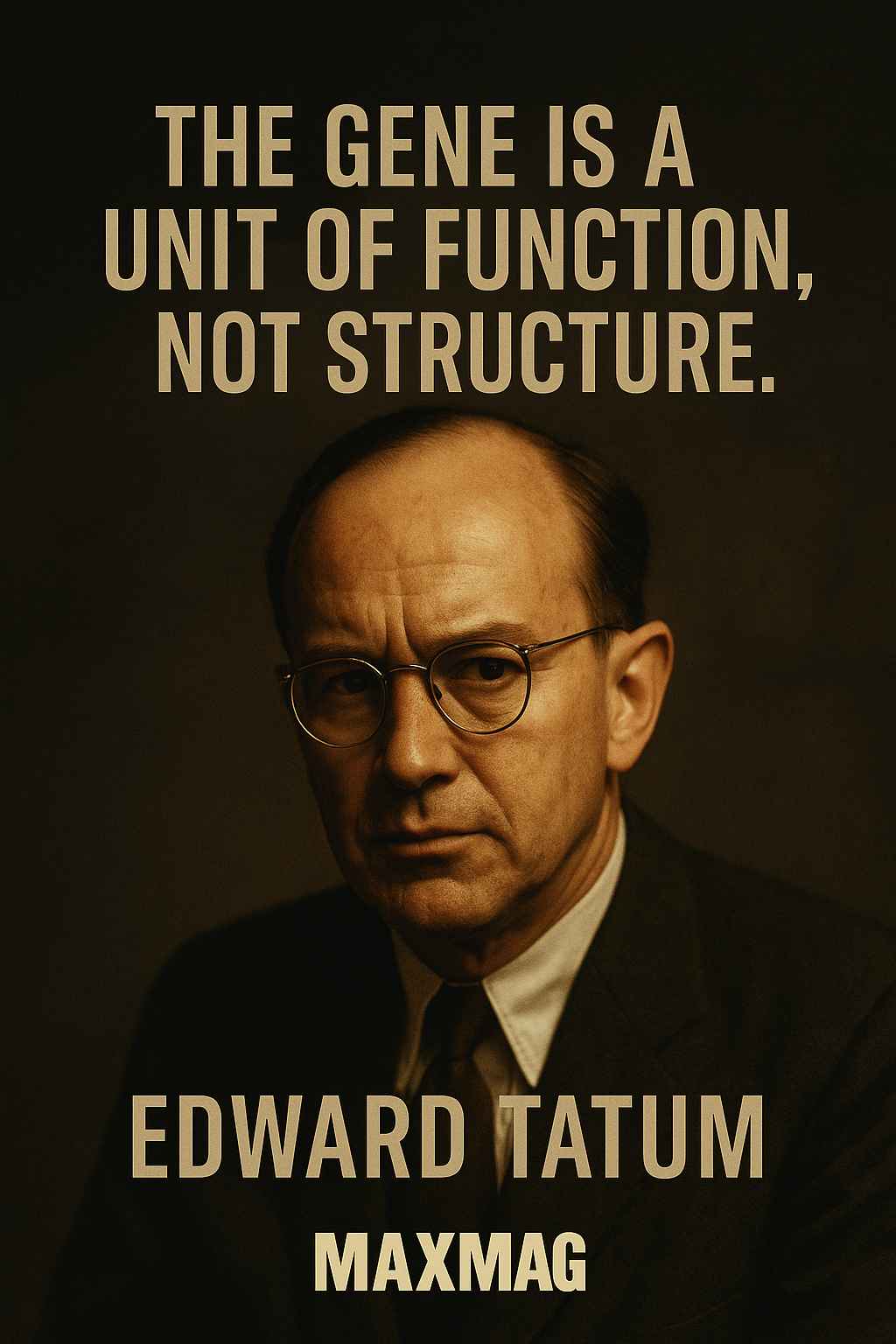
Personal beliefs, character and private life
A scientist shaped by family and loss
The bare dates in an Edward Tatum biography do little to convey the personal challenges behind the curriculum vitae. His mother died relatively early, and his father later remarried; moves between universities meant repeated uprooting. These experiences likely reinforced his preference for stable, well-ordered spaces – the laboratory benches where everything, from Petri dishes to ideas, could be arranged and made sense of.
Friends describe him as reserved but warm, with a dry sense of humour that surfaced most quickly when discussing “impossible” experiments. He was not a public intellectual in the vein of some later molecular biologists; he preferred to let data speak. Yet he did hold strong views about the importance of fundamental research, arguing that society’s investment in basic science would eventually pay off in unpredictable ways.
Habits, vices and the human cost of a life in science
Like many men of his generation, Tatum was a heavy smoker. It was a habit that likely helped him through long, tedious hours in the lab but which exacted a steep price. He died in New York City in November 1975, from heart failure complicated by chronic emphysema, a cause of death that appears almost as a footnote in many accounts yet casts a shadow over the closing pages of the Edward Tatum biography.
He married more than once, and colleagues recall that his home life offered a necessary counterweight to the intensity of his work. Even as biochemical genetics and bacterial genetics were transforming modern biology, Tatum tried to keep some boundary between professional and private worlds, resisting the temptation to turn every family interaction into a seminar on genes and enzymes.
These glimpses of character – the quiet humour, the chain-smoking, the loyalty to students and colleagues – prevent the Edward Tatum biography from collapsing into a mere list of papers and prizes.
Later years and final chapter of Edward Tatum
Rockefeller years: consolidating a legacy
In 1957, shortly before the Nobel announcement, Tatum joined the Rockefeller Institute (now Rockefeller University) in New York. There he continued to supervise research in microbial genetics, focusing on biosynthetic pathways and the regulation of gene activity in bacteria. The Rockefeller years, sometimes treated briefly in summaries of the Edward Tatum biography, were in fact crucial for consolidating his role as a senior figure in a rapidly changing field.
The institute’s intense, interdisciplinary environment suited him. Physicists, chemists and biologists mingled in seminars and corridors, and Tatum’s earlier insistence on bridging chemistry and genetics now looked prescient. Younger colleagues could sense that the centre of gravity in biology was shifting toward DNA, RNA and proteins, but they were also aware that this molecular turn rested on the conceptual groundwork laid by microbial and biochemical genetics.
Mentor, committee member, quiet statesman of science
In his later years, Tatum spent increasing time on advisory committees, grant panels and editorial boards. He served in the National Academy of Sciences and other learned societies, helping to steer funding and recognition toward emerging areas such as molecular genetics and microbiology. Although these roles rarely feature prominently in the dramatic arc of an Edward Tatum biography, they mattered for shaping the institutional landscape in which younger scientists worked.
By the time of his death, Tatum was widely regarded as one of the architects of modern genetics, even if he never became a household name. His influence spread through textbooks, through the success of his students and through the very structure of biology departments that had embraced microbial genetics as a core discipline.
The final chapter of the Edward Tatum biography is therefore less about a single late discovery and more about a steady presence – a scientist who helped midwife biology into its molecular age and then stayed to guide the next generation.
The lasting legacy of Edward Tatum biography
Why a mid-century scientist still matters
What, then, makes the Edward Tatum biography worth revisiting in the 21st century? Part of the answer lies in method. His insistence on simple, tractable organisms; his reliance on clear, testable hypotheses; and his willingness to use induced mutations as tools all prefigure the logic of modern genetic research. In an era of whole-genome sequencing and high-throughput screens, those principles remain as relevant as ever.
Another part of the answer lies in the ethical and social questions his work raises in hindsight. By demonstrating that genes control specific chemical events, Tatum and his peers made it imaginable – perhaps inevitable – that humans would one day attempt to edit those genes. Every time we discuss the risks and promises of gene therapies, or argue over how far society should go in “improving” genomes, we are, in a sense, extending the story begun in the Edward Tatum biography.
Understanding something bigger about our world
Ultimately, understanding the Edward Tatum biography helps us understand more than one scientist’s career. It illuminates how ideas move from obscure corners of the lab to the centre of public debate; how a fungus growing on bread could reshape medicine; and how experiments designed to answer narrow questions about metabolic pathways can lead, decades later, to arguments about editing human embryos.
In tracing the arc from Boulder to Stanford, from Neurospora to E. coli, from one gene one enzyme to the age of CRISPR, we see how science advances through a mix of bold hypotheses, meticulous work and the personalities of people like Edward Lawrie Tatum. That, finally, is why the phrase “Edward Tatum biography” should mean more than an entry in an encyclopaedia: it is a story about how we came to think of genes as tools, responsibilities and, increasingly, choices.
Frequently Asked Questions about Edward Tatum biography
Q1: Who was Edward Tatum and why is he important in genetics?
Q2: What is the one gene one enzyme hypothesis associated with the Edward Tatum biography?
Q3: How did Edward Tatum and his collaborators use bread mold in their experiments?
Q4: What role did Edward Tatum play in discovering genetic recombination in bacteria?
Q5: Did Edward Tatum receive the Nobel Prize alone?
Q6: How does the Edward Tatum biography connect to today’s gene editing technologies like CRISPR?



